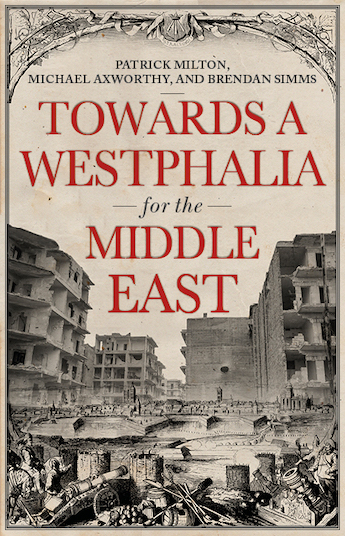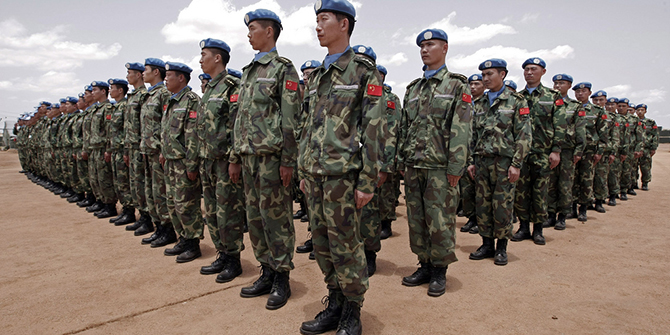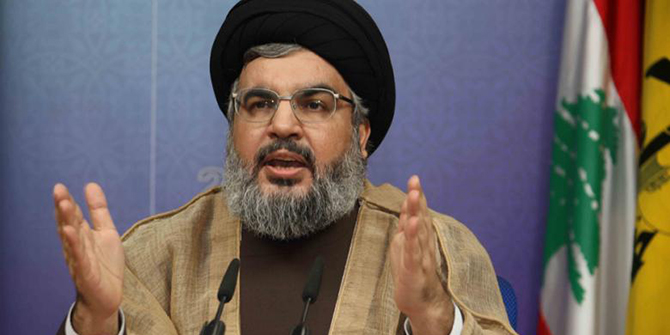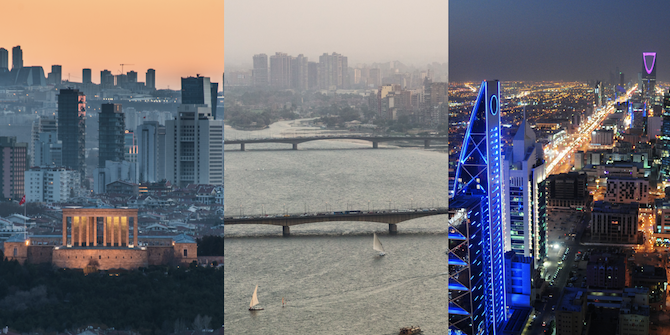by Guy Burton
An ambitious new book seeks to compare the conditions that led to Europe’s treaties of Westphalia, which ushered in relative peace and heralded the beginning of the modern international system, with the current situation in the Middle East, asking whether a similar grand treaty can be sought.
Over the past decade the Middle East has descended into conflict. Some of those have been bloody and violent, as in the case of Syria. Others have been colder, without direct confrontation, such as the hostility between Saudi Arabia and Iran, or the Saudi Arabia and UAE-led blockade against Qatar. In both cases, verbal jousting has combined with proxy conflicts in places like Libya and Yemen.
Beyond these conflicts have been other forms of foreign interference, including financing of different groups abroad, as happened in the years following the uprising in Egypt and eventual coup in 2013. Most recently, the fingerprints of Riyadh and Abu Dhabi have appeared in Sudan, where the regime massacred a sit in protest.
Several of these conflicts can be traced back to the Arab uprisings in 2011, although in some of the rivalries – for example, between Iran and Saudi Arabia, or between Saudi Arabia and Qatar – they preceded them.
Regardless of whether their causes were proximate or previously established, following the initial wave of protests which unseated dictators in Tunisia and Egypt, they then hit resistance in Libya, then Bahrain and Syria. From that point on, media attention and commentary arguably began to focus more on individual cases of conflict—and none more so than Syria. The country slipped from uprising and rebellion to revolution and eventually civil war. The results so far have been catastrophic: over half a million people dead, half the population displaced and a constantly rising reconstruction bill, from $250bn in 2017 to $350–400bn a year later.
But the Arab uprisings were a regional event, with several events bringing this dimension back into focus. One was the rise of the extremist Islamic State and its armed expansion across Syria’s border into Iraq in 2014. Another was the transnational threat that Islamic State posed to the wider world, by attracting foreign fighters to join it while also inviting disaffected individuals and groups to carry out attacks in their home countries. A third was the arrival of the refugee crisis on Europe’s doorstep in the summer of 2015—and the media attention which looked back to the Syrian war which caused it.
The refugee crisis was strongly felt among European policy makers and publics. It prompted renewed discussion and urgency over how best to resolve the war in Syria. But to do that meant picking up the different strands of the conflict, which all led off in different directions. One response to this came from Germany and a partnership between the Korber Foundation and the Policy Planning Unit of the Federal Foreign Office, along with Cambridge University. Their project proposed to draw lessons for the future of the Middle East by looking to Europe’s past: by comparing the experience of the Thirty Years’ War to today’s Middle East, parallels and analogies would be found that could be used to develop effective peace initiatives.
Both to articulate the parallels and gain ‘buy in,’ scholars of that early modern war as well as practitioners from the Middle East, Europe and the US were brought together in a series of workshops. The resulting book, Towards a Westphalia for the Middle East (Hurst & Co., 2018) by Patrick Milton, the late Michael Axworthy and Brendan Simms, is the fruit of that labour.
In the book’s three parts—outlining, respectively, the relevance of the project and the state of the Middle East today (including a crisis of legitimacy; the overarching Saudi-Iranian rivalry and sectarianism), the origins and development of the Thirty Years’ War and its eventual settlement; and solutions based on parallels between the two regional conflicts—the authors highlight several themes which link the two conflicts, despite the 400 years that separate them.
The authors point out that the regional conflicts in central Europe and the Middle East are both extremely complex, with multiple causes and various forms of conflicts taking place at the same time. They observe that in both instances the reasons for the wars had longstanding causes, but that the outbreak of violence was initially concentrated at the local level and space. Subsequently, they escalated via proxy conflict to direct interventions dominated by great power rivals. The authors also note that during this process, the conflicts often lacked any formal declaration of war, even as they usually entailed strong sectarian animosity.
Had the book left it there, it would have been an interesting account and point of comparison. But the project and the authors chose to go beyond these thematic similarities and suggest some aspects of the Westphalian experience that might be useful in the search for a peaceful settlement. In doing this, the participants make it clear that neither do they see Westphalia as a European model or blueprint for a future Middle East peace, or that piecemeal solutions are the answer. As the representatives from the Federal Foreign Office point out in their preface: ‘History does not lay down any rules for the future. what it does, however, is to illustrate options for taking action.’ (p. xvii)
To illustrate this, in the third part of the book, the authors highlight aspects of the negotiations and peace congresses at Munster and Osnabrück, which together formed the single Peace of Westphalia. An important consideration was that those deliberations were inclusive from the outset. No group or party was left out; nor was a ceasefire called before talks began. Furthermore, when negotiations took place, they combined elements of conflict containment and resolution at the same time. They included simultaneous and overlapping talks at different levels and between different parties.
Of course, trust and transparency (in the form of actors’ bottom lines) between the conflict parties was low to begin with. But the book points out how that challenge was overcome: both in the process of negotiations as well as the final outcome. It helped that those negotiating for the conflict parties had strong plenipotentiary powers to make binding decisions on the spot.
Many of those individuals found themselves living alongside negotiating teams from the other states. Because of the difficulty of travel at the time, they not only lived and worked together, but socialised with each other too. That helped smooth away initial distrust and made each other’s red lines clearer. The interactions helped create a cross-confessional ‘Third Party’ that was willing to compromise, including on religious matters.
But perhaps the most striking aspect of the deliberations was the settlement that resulted. The authors argue that the conventional interpretation associated with Westphalia is wrong. Rather than putting in place a system of sovereign states and a norm not to interfere in their domestic affairs, the treaties signed in Germany in the mid-seventeenth century actually encouraged a more limited and conditional form of sovereignty, with mechanisms beyond the state to settle disputes and intervention by guarantor powers. Moreover, it was through these measures, which ran through and above the states, that peace was ensured.
Such a vision would be extremely challenging to achieve in the Middle East. Typically, the region is one where governments have emphasised their independence and been loath to see other countries interfere in their sovereignty. Since its inception, the Arab League has done little to knit together its members or to challenge the often repressive treatment of states against their societies, for example. Only once, in 2011, did it choose to act in this way, when Syria was thrown out.
At the same time though, states’ public statements are contradicted by their actions, especially since 2011. As the conflicts that have unfolded since have shown, state actors in the Middle East have been willing to intervene, usually in other, weaker and fragile states. An unspoken question therefore posed by the book is whether today’s regimes and other actors are willing to change their behaviour in this regard. But in order for that to happen, a first step must be taken. The region’s regimes must realise that a peaceful settlement requires a collective solution, not one that is based on self-interest alone. And for that to happen, they need to realise that the status quo is neither sustainable nor productive for themselves. How to achieve that though, will be a challenge and require persuasion—hence the involvement of politicians and officials from inside and outside the region in the conceptualisation and production of this book.
 Guy Burton is Visiting Fellow at the LSE Middle East Centre and Adjunct Professor at Vesalius College, Brussels. He is the author of Rising Powers and the Arab-Israeli Conflict since 1947 (Lexington, 2018) and he tweets at @guyjsburton
Guy Burton is Visiting Fellow at the LSE Middle East Centre and Adjunct Professor at Vesalius College, Brussels. He is the author of Rising Powers and the Arab-Israeli Conflict since 1947 (Lexington, 2018) and he tweets at @guyjsburton







